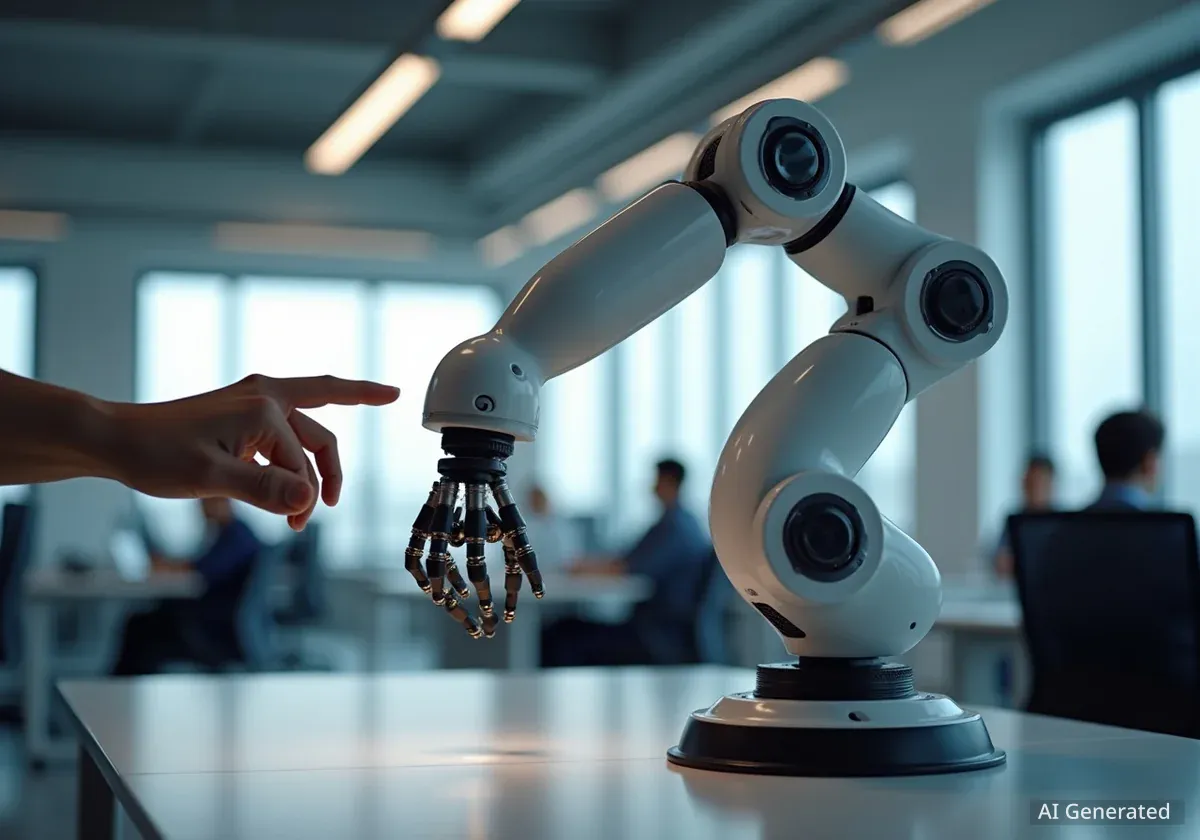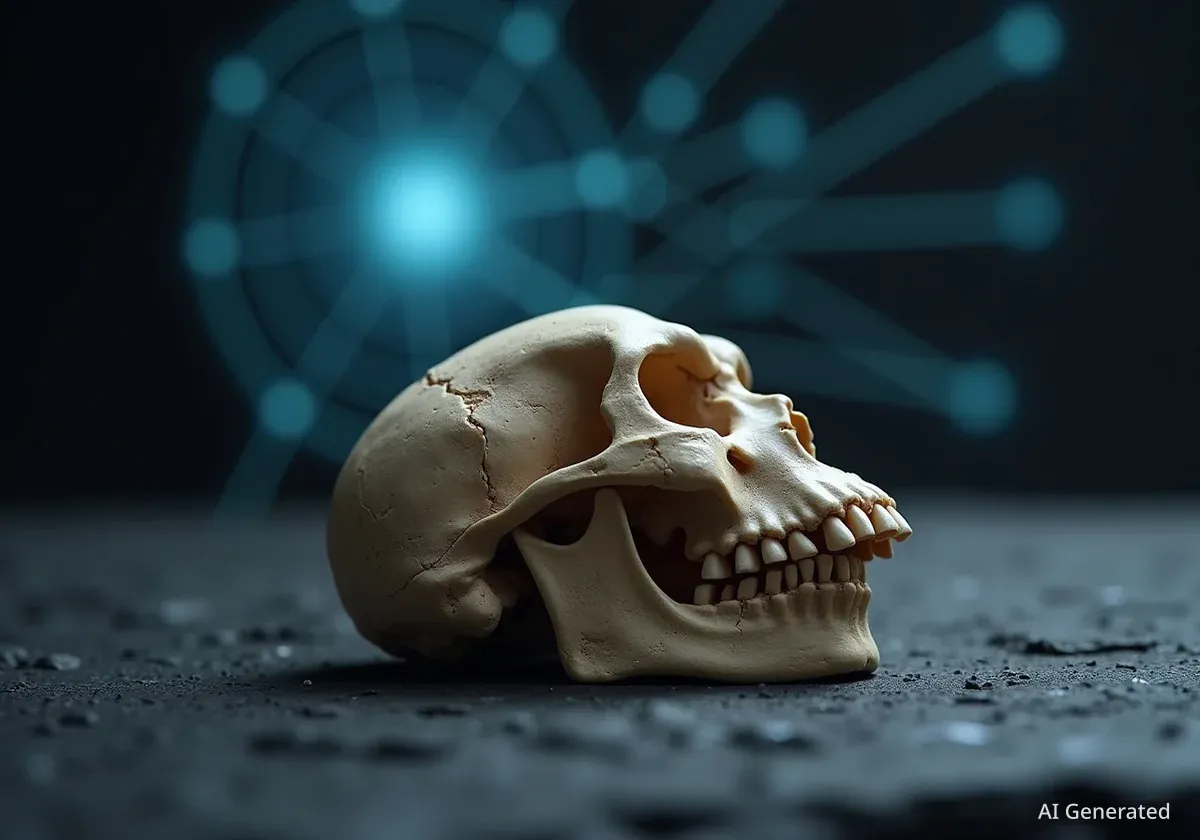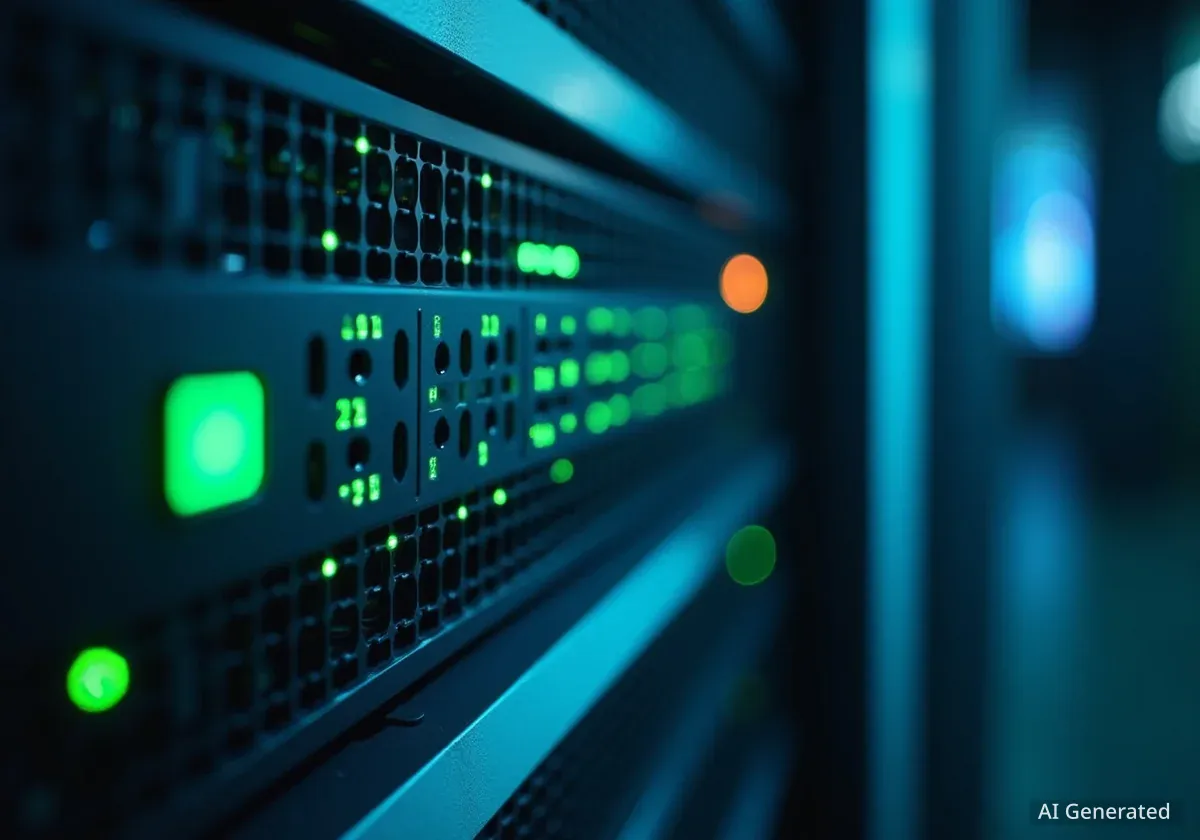Artificial intelligence can now perform many complex tasks at a level comparable to humans, but significant limitations prevent it from replacing entire jobs, according to Ethan Mollick, a professor at the Wharton School. He argues that AI's capabilities are uneven, a concept he calls the "jagged frontier," which means the technology excels in some areas while failing in others that might seem simple.
This gap between performing isolated tasks and handling the full scope of a professional role is a critical distinction in understanding AI's real-world economic impact. While AI can analyze data or write code, it currently lacks the comprehensive skills required to navigate the complexities of a complete job, which involves much more than technical execution.
Key Takeaways
- Artificial intelligence is proficient at executing specific tasks but struggles to replicate the full range of responsibilities that constitute a job.
- The concept of a "jagged frontier" describes AI's inconsistent abilities, where it performs well on some complex tasks but poorly on others.
- Jobs are complex bundles of tasks that include social interaction, judgment, and organizational navigation, areas where humans still hold a major advantage.
- Predictions of mass job displacement often fail to account for the social, political, and practical complexities of real-world work environments.
- Experts suggest focusing on AI as a tool for augmenting human performance rather than as a direct replacement for workers.
Understanding AI's Uneven Abilities
The rapid advancement of AI has led to widespread discussion about its potential to disrupt the labor market. However, a closer look reveals a more nuanced reality. Professor Mollick and his colleagues introduced the term "jagged frontier" to describe the unpredictable nature of AI's skills.
This means that an AI model might perform a task you'd expect to be difficult, like passing a bar exam, but fail at a task that seems much simpler. This inconsistency is a core reason why AI is not yet ready to take over entire professions.
"AI is good at some stuff you wouldn’t expect and bad at some stuff you wouldn’t expect," Mollick explained. While the specific areas of weakness change as technology improves—for instance, AI's mathematical abilities have significantly improved—the jaggedness itself persists. This makes it difficult to predict how and when AI can be reliably integrated into workflows.
Current Technological Gaps
Several fundamental limitations hold AI back from performing complete jobs. One significant issue is the lack of persistent memory and the ability to learn continuously from ongoing experiences in the same way a human does. An AI doesn't remember past interactions or learn from project to project unless specifically programmed to do so in a limited context.
The Mystery of Large Language Models
According to experts, we don't have a complete scientific understanding of why large language models (LLMs) are as effective as they are. At their core, these systems are designed to statistically predict the next word or "token" in a sequence. How this simple function leads to abilities like reasoning or developing original ideas remains an area of active research.
These gaps mean AI cannot currently handle many routine aspects of a job. For example, an AI cannot attend a team meeting on your behalf, understand the subtle social cues, and then apply that context to its work later. The technology is task-oriented, not role-oriented.
The Difference Between a Task and a Job
One of the most common misconceptions in the AI debate is confusing the automation of tasks with the elimination of jobs. Mollick emphasizes that very few jobs consist of a single, repetitive task that can be easily automated.
Instead, most professions are a complex bundle of responsibilities. A radiologist, for example, does more than just analyze X-rays. Their job also involves consulting with other doctors, communicating difficult news to patients, troubleshooting unexpected issues, and making critical judgment calls based on incomplete information.
"A computer scientist looks at the issue like, 'What does a radiologist do?' They say they read X-rays, but they don’t think about all the other things that are bundled into the job," Mollick stated.
Even if AI becomes better than humans at the single task of reading an X-ray, it cannot perform the other essential functions of the radiologist's role. This reality applies across most industries, from journalism and law to finance and management. Jobs require a blend of technical skill, social intelligence, and adaptive problem-solving.
Historical Models for Labor Disruption
Economists have well-established models for how technology replaces manual labor, based on events like the Industrial Revolution. However, there are fewer clear precedents for a general-purpose technology that augments or replaces intellectual labor on a massive scale. This makes forecasting the long-term economic effects of AI particularly challenging.
Why Bold Predictions Often Miss the Mark
The conversation around AI is often dominated by bold predictions, from utopian visions of a work-free future to dystopian scenarios of mass unemployment. Mollick notes that many of these forecasts come from individuals with strong incentives, such as company founders seeking investment or researchers who genuinely believe they are on the verge of creating human-level intelligence.
However, these predictions frequently overlook the messy reality of how work gets done. "Work is complicated and contingent," Mollick said. Success in a job is not always about being the smartest or most efficient; it also involves navigating company politics, managing relationships, and adapting to change.
- Organizational Inertia: Large companies adopt new technologies slowly due to complex internal processes and change management challenges.
- Social Contracts: There are social expectations that can slow AI adoption. For example, most people would prefer a human journalist to write an investigative report or a human professor to grade a final essay, even if an AI could technically do it.
- The Productivity Puzzle: If employees believe that using AI to become more efficient will lead to them being fired, they have no incentive to innovate. This may partially explain why the massive investment in AI has not yet translated into major economy-wide productivity gains.
Leaders who view AI solely as a tool for reducing headcount may fail to unlock its true potential. A more effective approach is to see it as a way to make employees better and their work more meaningful. "The actual experts inside your company are the ones who are going to figure out how to use AI," Mollick added.
The Future of Work and Education with AI
While AI may not be eliminating jobs overnight, it is undeniably changing them. The technology is poised to become an indispensable tool, much like the spreadsheet or the internet. The focus for businesses and individuals should be on adaptation and augmentation.
In the field of education, AI presents both challenges and opportunities. While it makes cheating on assignments like take-home essays easier, it also offers the potential for transformative learning tools.
"A universally available one-on-one tutor, used with guidance, has been the dream of education forever," Mollick noted. He envisions a future with "flipped classrooms," where students learn core concepts at their own pace with an AI tutor and use class time for active, collaborative projects guided by a human teacher.
Ultimately, the integration of AI into the workforce is not a simple story of replacement. It is a complex process that involves technology, people, and social systems working together. The key advantage humans retain is their ability to manage this complexity—a skill that, for the foreseeable future, remains beyond the grasp of even the most advanced artificial intelligence.





